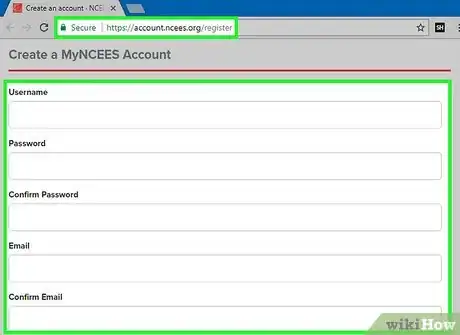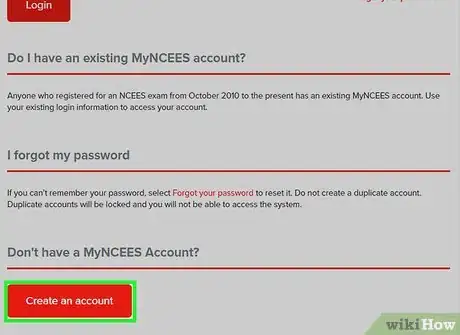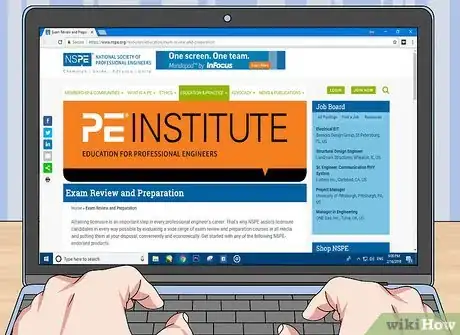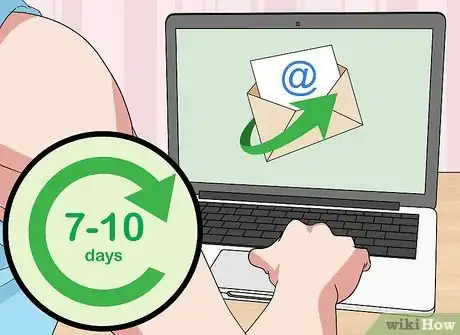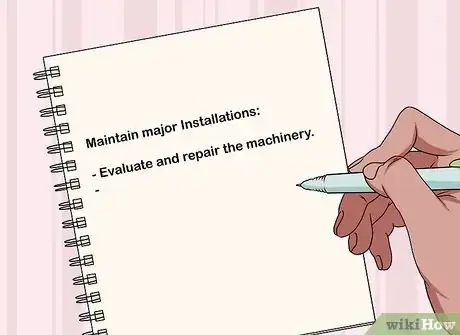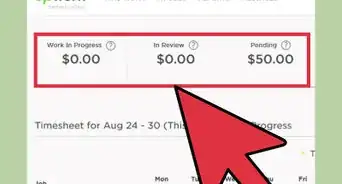This article was co-authored by wikiHow Staff. Our trained team of editors and researchers validate articles for accuracy and comprehensiveness. wikiHow's Content Management Team carefully monitors the work from our editorial staff to ensure that each article is backed by trusted research and meets our high quality standards.
There are 7 references cited in this article, which can be found at the bottom of the page.
This article has been viewed 17,246 times.
Learn more...
After completing an engineering degree, you can earn a PE license with hard work and commitment. Concentrate on passing the Fundamentals of Engineering (FE) exam, which permits you to start working in your discipline. After 4 years of dynamic work in your field, you will be able to take the Principles and Practice of Engineering exam (PE). If you pass the exam, you will obtain your PE license.
Steps
Completing the FE Exam
-
1Create an NCEES account online. To apply to take the FE exam, you will first have to create an account on the National Council of Examiners for Engineering and Surveying (NCEES) website. Enter your name, date of birth, and email address, then choose a username and password. Agree to the Terms of Use and Privacy Statement to finalize the registration.
- Visit https://account.ncees.org/register to register.
-
2Register for the FE exam. Sign into your NCEES account, then select the "register" option and follow the onscreen instructions. Click "schedule" and choose your preferred time and venue from the options presented. Pay the $175 registration fee by credit card to complete the registration.[1]
- Exams are held in select Pearson Vue test centers. The program will show you the nearest test centers based on the location you entered when registering.
Advertisement -
3Review online FE exam preparation guides. The National Society of Professional Engineers (NSPE) endorses several educational products that can help PE license seekers accomplish their goal. These products include online exam review courses and practice exams. See the resources available by visiting the NSPE's website at https://www.nspe.org/resources/education/exam-review-and-preparation.
-
4Prepare to sit through the 6 hour exam. The FE exam is a computerized test that lasts for a period of up to 6 hours. The exam, which consists of 110 multiple-choice questions, covers content that is taught in a typical accredited B.S. engineering program. Keep the length and duration of the exam in mind when answering questions to make the most of your time.[2]
- There is one scheduled break of 25 minutes allotted during this time.
- Prior to the exam, eat well, drink water, and use the washroom to prepare for the lengthy test.
-
5Check your results online 7-10 days after the test. Expect an email notification 7-10 days after the exam informing you that your results are listed on the NCEES website. Log into your account to view your results. If you have failed, you will be issued a diagnostic report detailing what areas of the test that you were weakest on. [3]
- If you fail, you can reapply to take the exam again.
Gaining Professional Experience
-
1Contact your state licensure board to find out their requirements. Each U.S. state has their own PE licensure board with their own set of regulations. Contact your state's board to find what it requires in terms of work experience and documentation. Visit the NCEES website at https://ncees.org/state-links/ to find the contact information for your state's board. [4]
- Most states require you to complete 4 years of professional engineering work after finishing a four-year degree in engineering.
-
2Find a job in your particular engineering discipline. After completing your degree and FE exam, you will have to choose a branch of engineering to pursue your license in. Focus on a discipline that you show the most aptitude in, feel confident about, and enjoy the most. Once you choose, visit the The National Society of Professional Engineers (NSPE) website at http://careers.nspe.org/jobs to search their job board for an opening near you.
-
3Take on as many complex, professional tasks as possible. In order to be counted as professional experience, your time must be spent doing important engineering work. Take on as much responsibility as you can to demonstrate your capabilities. If you do not demonstrate this kind of initiative, your work may not qualify as professional experience.[5]
- For instance, if you are a mechanical engineer, take on important jobs like writing technical reports or designing machinery.
-
4Describe your work in great detail. To document your work experience, you will have to outline your title and level of responsibility. Write a concise description of your tasks and explain the complexity of each one with specific details. Avoid vague or passive language and use engineering terminology that an evaluation board will recognize.[6]
- For example, if your job was to test and maintain major installations, write out all the steps you took to evaluate and repair the machinery.
- Most state licensure boards will provide specific forms to fill out.
-
5Get your work documentation approved by your supervisor. Before submitting your work self-assessment, ask your work supervisor to read and approve it. They may elaborate on your experience, or simply sign off on what you've written. Your state's licensure board will have their own requirements for this verification process. [7]
- Your approved work description should include contact information for your supervisor in the event that a reviewing board wants to contact them for further information.
-
6Submit your application to your state's engineering licensure board. To qualify for the Principles and Practice of Engineering exam, submit an application to your state's licensure board with a thorough description of your 4 years of work experience. The board will evaluate your application to determine if you have the education and work experience to merit the chance to get your PE license. If they rule in your favor, you will be allowed to sign up for the exam.[8]
- Your state's board will have its own requirements for submitting your application.
Taking the PE Exam
-
1Contact your state's licensure board for exam details. Each state administers its own PE exams for different engineering disciplines. Contact the board to get as much information as possible about the format, content, and duration of the exam. Depending on the state, your exam will either be computer-based like the FE exam or a paper and pencil written format.[9]
-
2Register for the exam through your NCEES account. Sign into your NCEES account and click the link for engineer exam registration. Choose your location and engineering discipline from drop down menu options. Click "register" to pick from a list of available exam dates and venues.
- You will also have to pay a registration fee after scheduling your exam appointment, which will depend on the state you live in.
-
3Prepare for a long exam. While PE exams differ across states and engineering disciplines, they are all fairly long. Most PE exams have 80 questions and the exam periods can last up to 9 hours. To find out information specific to your PE exam, visit https://ncees.org/engineering/pe/.
- For instance, the PE civil engineering exam has 80 questions and can last up to 8 hours. [10]
- Get a good deal of sleep, food, and water before the exam to help you stay alert throughout.
-
4Wait patiently for your exam results. If you take the computer format of the exam, your results should be available in 7-10 days. If you take the written exam, expect to wait closer to 8-10 weeks for your exam results. Remain as calm and optimistic as you can while you wait for your score.[11]
References
- ↑ https://fbpe.org/licensure/application-process/fundamentals-examination/
- ↑ https://ncees.org/engineering/fe/
- ↑ https://ncees.org/exams/scores/
- ↑ https://www.nspe.org/resources/licensure/resources/demonstrating-qualifying-engineering-experience-licensure
- ↑ https://www.nspe.org/resources/licensure/resources/demonstrating-qualifying-engineering-experience-licensure
- ↑ https://www.nspe.org/resources/licensure/resources/demonstrating-qualifying-engineering-experience-licensure
- ↑ https://www.nspe.org/resources/licensure/resources/demonstrating-qualifying-engineering-experience-licensure
- ↑ https://www.nspe.org/resources/licensure/resources/demonstrating-qualifying-engineering-experience-licensure
- ↑ https://ncees.org/engineering/pe/
